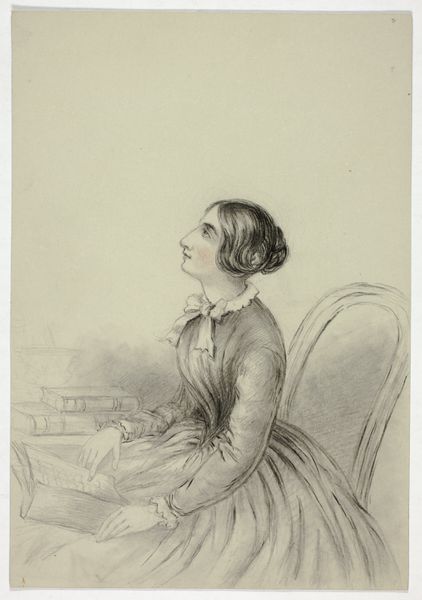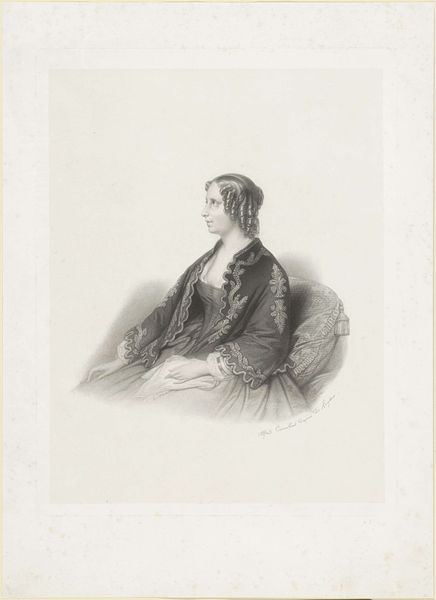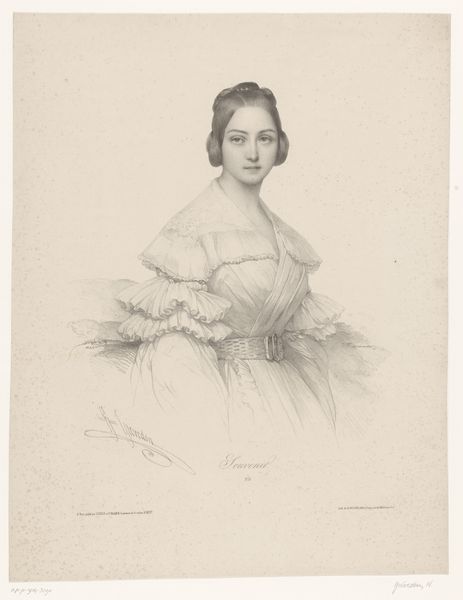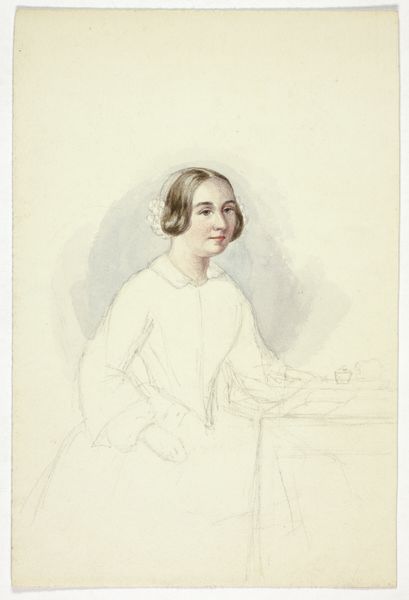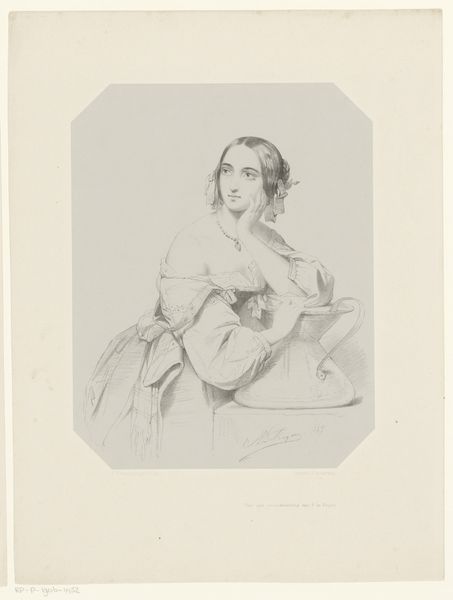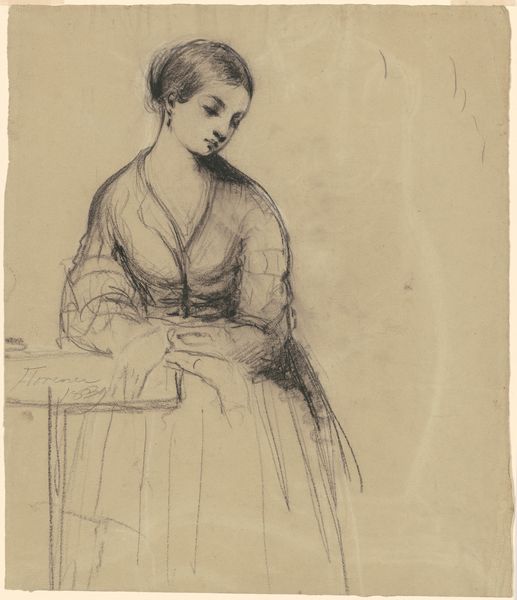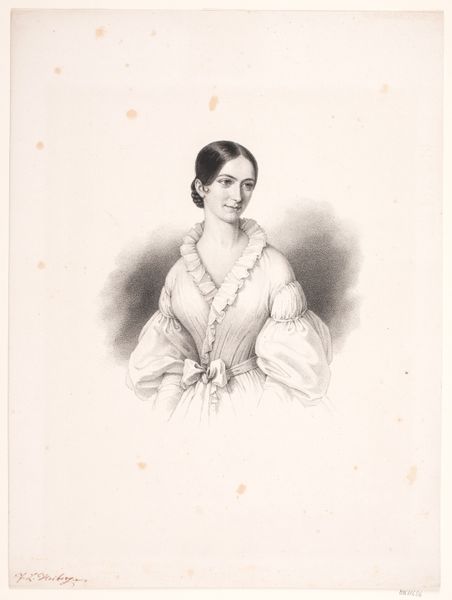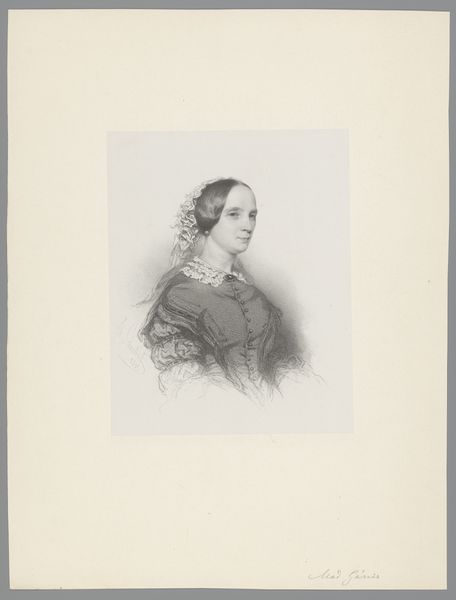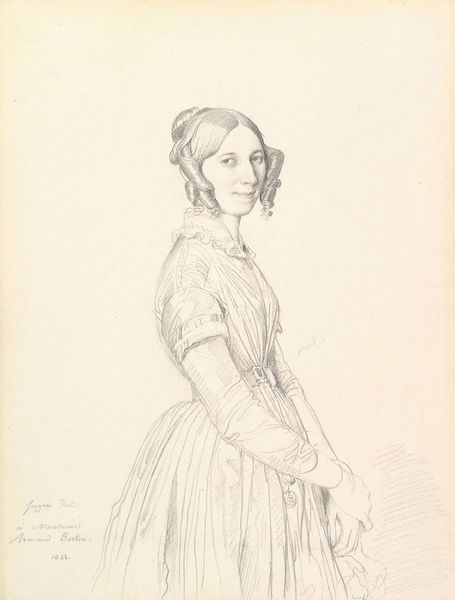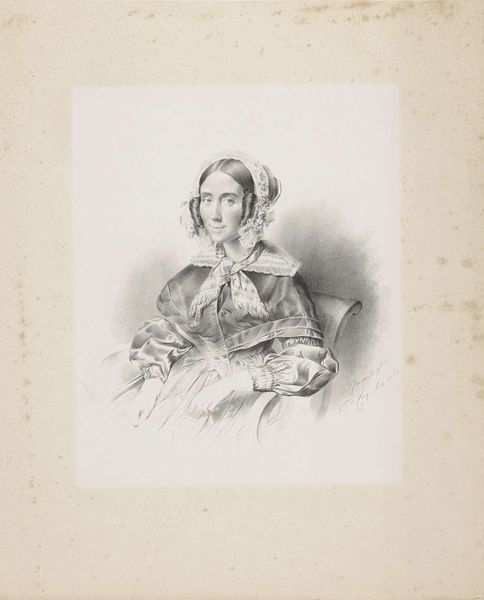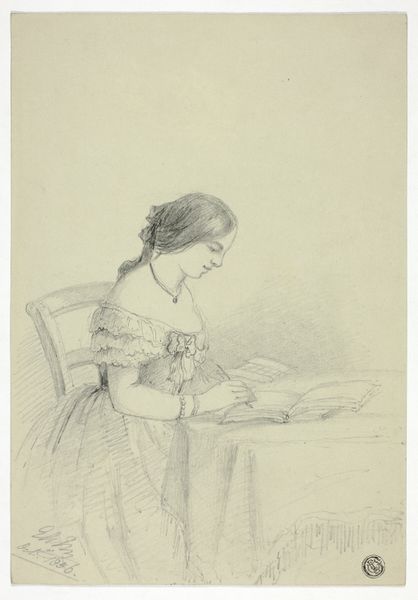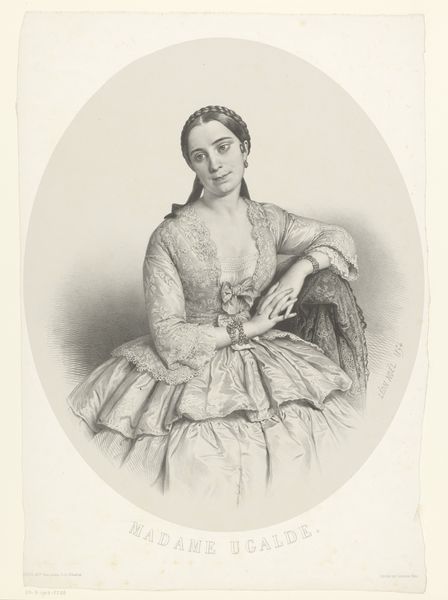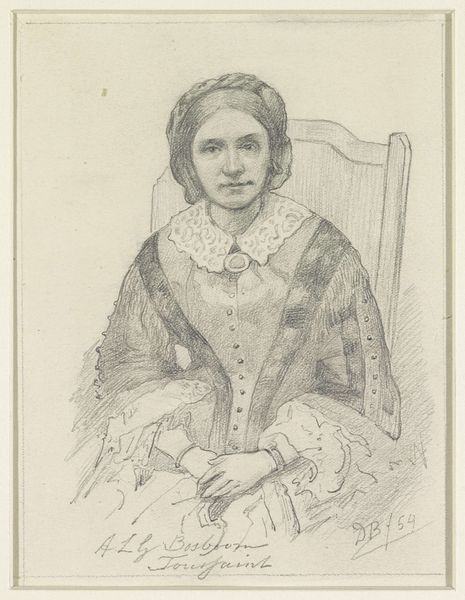
drawing, gouache, paper, chalk, graphite, black-chalk
#
portrait
#
drawing
#
gouache
#
caricature
#
paper
#
romanticism
#
chalk
#
graphite
#
portrait drawing
#
academic-art
#
black-chalk
Dimensions: 254 mm × 176 mm
Copyright: Public Domain
Curator: We are standing before "Portrait of Selina (Quin) Markham," created in 1850. It’s an exquisite drawing that utilizes graphite, gouache, and black chalk on paper, currently residing here at the Art Institute of Chicago. Editor: Immediately, the delicate rendering of the fabric strikes me. It suggests a hushed atmosphere and refined elegance of its sitter. The tonal range achieved with those materials is quite impressive, no? Curator: Absolutely. The artist, Elizabeth Murray, masterfully uses light and shadow to define form, creating a very detailed and compelling profile. Consider the soft transitions on her face and the deliberate choice to leave some areas almost untouched. It draws attention to the central figure, Selina. Editor: The softness almost veils her—the image hints at the kind of laborious processes of portraiture at this time and the material cost associated with portraying one's image. It speaks to a kind of gentility, class, and perhaps aspirations associated with Selina's life. Curator: Indeed. And beyond its material implications, we observe a deliberate choice of style characteristic of Romanticism, an era that often prioritized emotional expression and a sense of idealism. It speaks to an inherent cultural meaning as the portrait adopts the traditional artistic practices for its time. Editor: Interesting you point that out. It begs the question: Who was Selina? Was it a gift for a suitor? Was it done as an act of friendship? The work's history is just as valuable to note, wouldn't you say? What materials were easily available to artists in that location? These questions bring new context. Curator: Those material considerations inevitably inform our understanding. However, to me, Murray's command of form is particularly striking in Selina's poised expression and delicate facial features. It reflects her technical virtuosity that translates well into her emotional expression. Editor: Ultimately, those social, economic, and even artistic elements together shape our modern interpretation of its emotional depth. Curator: A complete understanding acknowledges not only how we engage but also the conditions surrounding that engagement. Editor: Precisely. It encourages a fuller appreciation of both artist and subject and provides further insight.
Comments
No comments
Be the first to comment and join the conversation on the ultimate creative platform.
